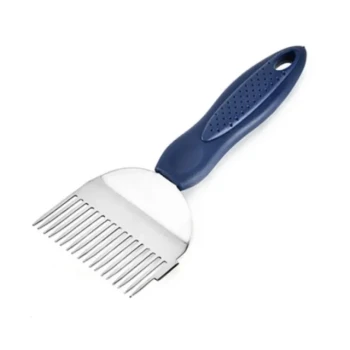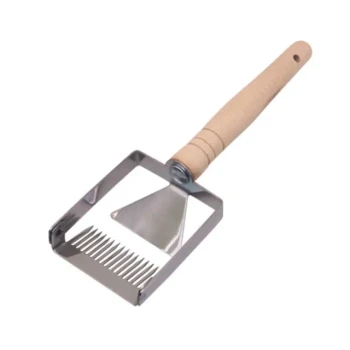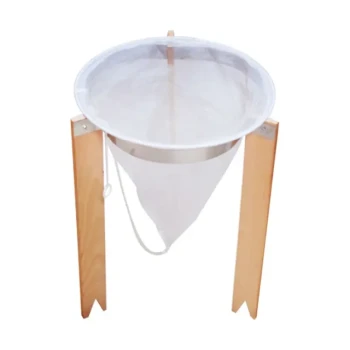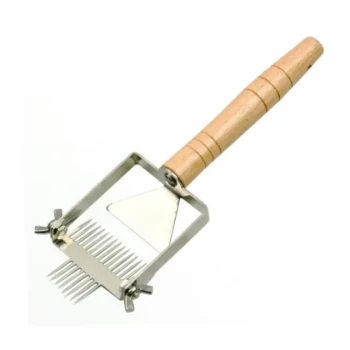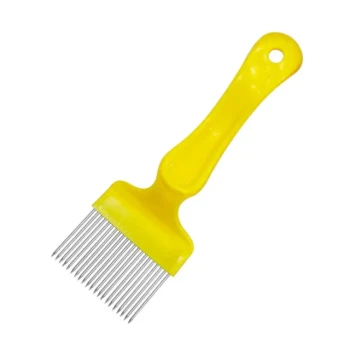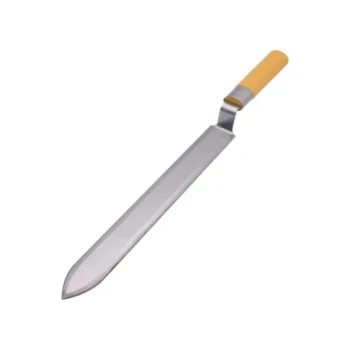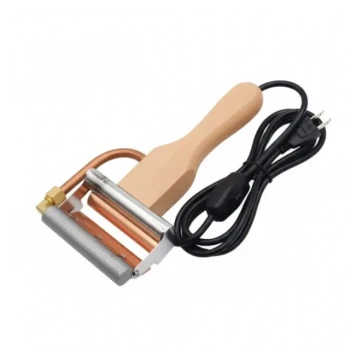The fundamental purpose of beekeeping gear is to provide a physical barrier that protects you from bee stings. Working closely with a hive, especially during inspections or honey harvesting, can be perceived as a threat by the bees, and protective clothing is the primary line of defense against their natural defensive response.
The true value of protective gear extends beyond simply avoiding pain. It provides the psychological safety needed to work calmly and confidently, which in turn leads to less agitated bees and a safer environment for both the beekeeper and the hive.
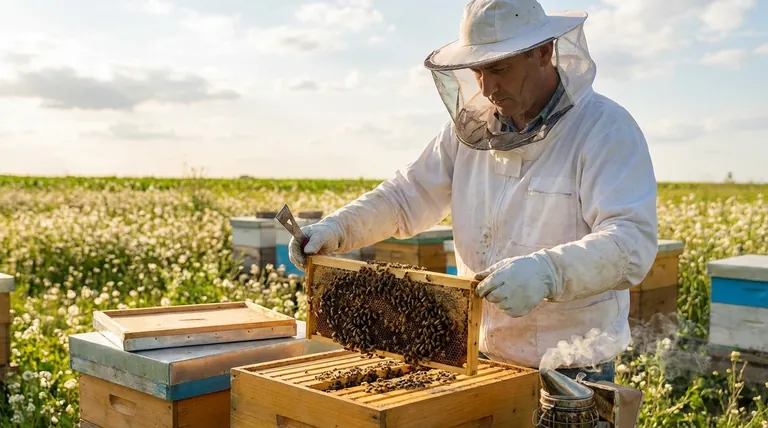
The Core Function: A Barrier Against Stings
The most immediate and obvious reason for protective gear is to prevent the bee's stinger from reaching your skin. This is critical for both safety and comfort while managing your colonies.
Protecting the Most Sensitive Areas
A bee sting on the arm is painful, but a sting on the face can be significantly more dangerous. The beekeeping helmet and veil are considered the most essential pieces of gear because they shield your eyes, nose, and mouth from stings that could cause severe swelling and distress.
Why Bees Sting During Inspections
Bees are generally not aggressive, but they are highly defensive of their home. When a beekeeper opens a hive, they are disrupting the colony's environment, which can trigger a defensive response. Stinging is their primary method of repelling a perceived threat.
The Advantage of Full-Body Coverage
A full-body bee suit or jacket is designed to keep a bee’s stinger away from your skin entirely. By providing complete coverage with long sleeves and legs, this gear allows you to perform necessary tasks without fear of injury, ensuring you can manage the hive effectively.
The Psychological Advantage of Protection
Feeling safe fundamentally changes how you interact with your bees. The confidence gained from wearing proper gear is especially crucial for those new to the craft.
Building Confidence for Beginners
New beekeepers are strongly encouraged to wear a full suit, veil, and gloves. This level of protection allows you to learn the bees' behavior and handle frames without the constant fear of being stung, creating a more positive and effective learning experience.
Enabling Calm and Efficient Work
Bees are sensitive to jerky, panicked movements. A beekeeper who feels secure is more likely to move slowly and deliberately. This calmness helps keep the bees placid, reducing the likelihood of defensive behavior and making the entire process safer and more efficient.
Understanding the Trade-offs
While essential, it's important to recognize that protective gear involves a balance between complete safety and other factors.
Dexterity vs. Protection
The primary trade-off, especially with gloves, is a loss of dexterity. Some beekeepers find that thick gloves make it harder to handle frames delicately. However, for beginners, the protection they offer far outweighs this inconvenience.
Experience and Gear Reduction
You may see some experienced beekeepers working with minimal gear, perhaps only a veil. This choice is based on years of understanding bee behavior and the specific temperament of their own colonies. It is not a recommended approach for anyone starting out.
Making the Right Choice for Your Goal
Selecting the right gear depends on your experience level and the specific task at hand.
- If you are a new beekeeper: Your priority is safety and building confidence. A full suit with a veil and gloves is the recommended standard.
- If you are an experienced keeper performing a quick inspection: A jacket and veil combination paired with durable pants may be sufficient, depending on the hive's temperament.
- If your priority is maximum safety during disruptive tasks like honey harvesting: A high-quality, full-body bee suit is the essential tool for the job.
Ultimately, the right protective gear empowers you to be a better, more attentive beekeeper by removing fear from the equation.
Summary Table:
| Gear Type | Primary Function | Key Benefit |
|---|---|---|
| Helmet & Veil | Protects face, eyes, and neck from stings. | Prevents dangerous facial swelling and allows clear vision. |
| Bee Suit/Jacket | Provides full-body coverage as a sting barrier. | Enables safe, fear-free inspections and harvesting. |
| Gloves | Shields hands and wrists from stings. | Builds confidence for beginners handling frames. |
Equip yourself and your team for success with professional-grade beekeeping supplies from HONESTBEE. We understand that the safety of your commercial apiary or the quality of the equipment you distribute is paramount. Our wholesale-focused operations ensure you get the durable, reliable protective gear you need to work confidently and efficiently. Protect your most valuable asset—your people. Contact HONESTBEE today to discuss your wholesale supply needs and ensure every beekeeper is properly equipped.
Visual Guide

Related Products
- White Cotton Beekeeping Jacket and Veil for Bee Keepers
- Professional Multi-Function Uncapping Fork with Integrated Blade for Beekeeping
- Silicone Rubber Honey Drum Heating Belt
- Heavy Duty Stainless Steel Frame Cleaner with Plastic Handle
- Professional Stainless Steel Uncapping Fork with Wooden Handle
People Also Ask
- What is a bee enclosure called? A Guide to Choosing the Perfect Apiary Site
- What are some dos and don’ts when cleaning a beekeeping suit? Protect Your Investment and Your Hive
- How do bees produce honey? The Ingenious Process of Natural Food Preservation
- What are some safety precautions to consider when beekeeping? Master a Holistic Approach for Apiary Safety

